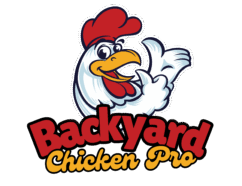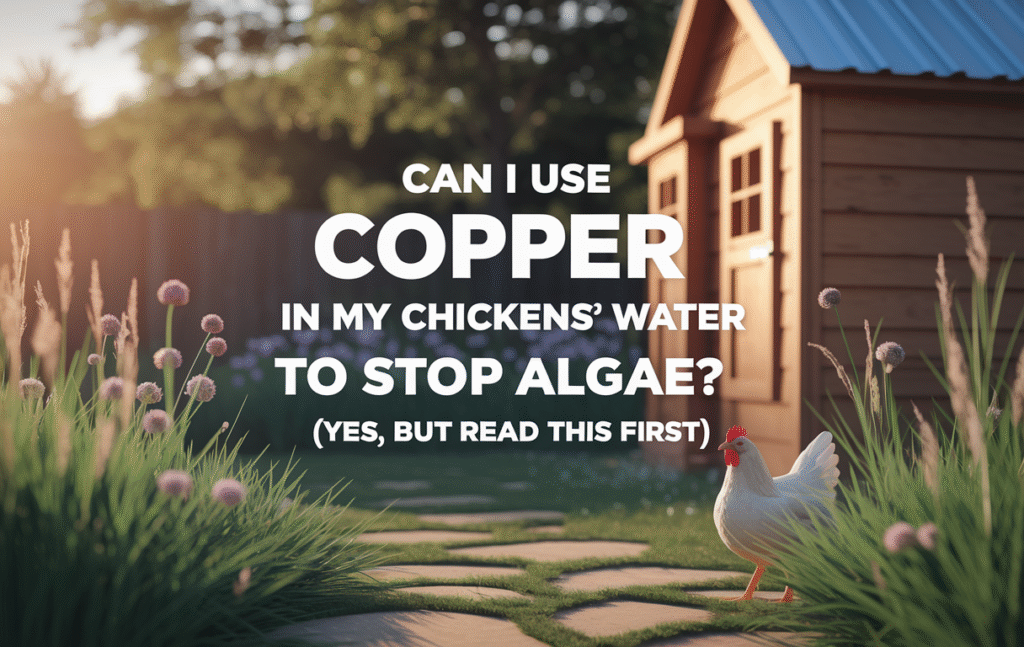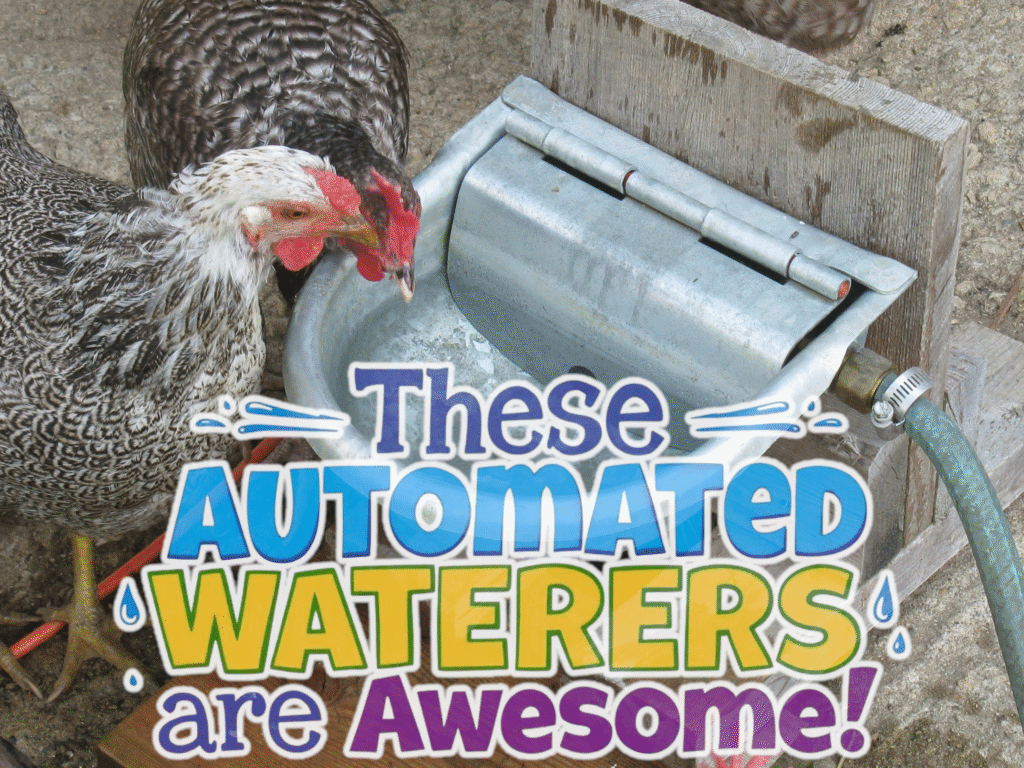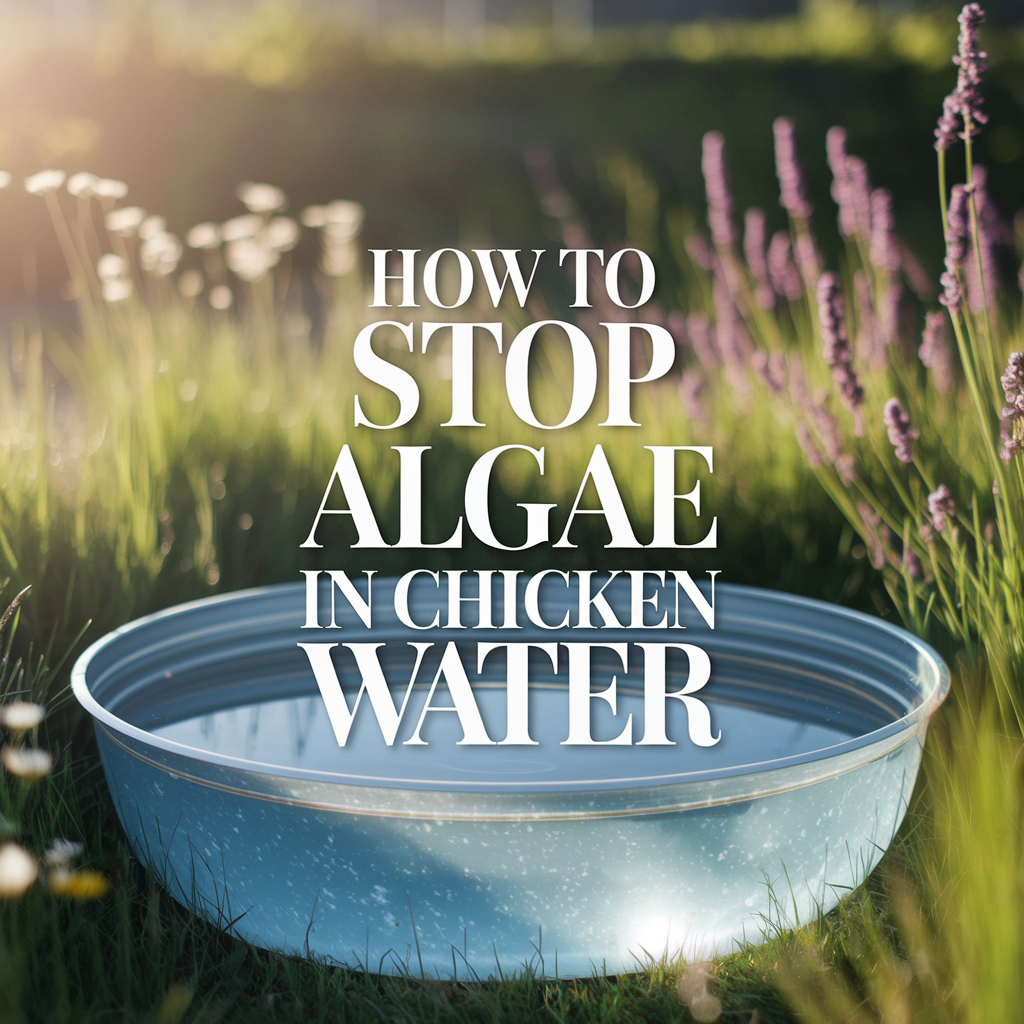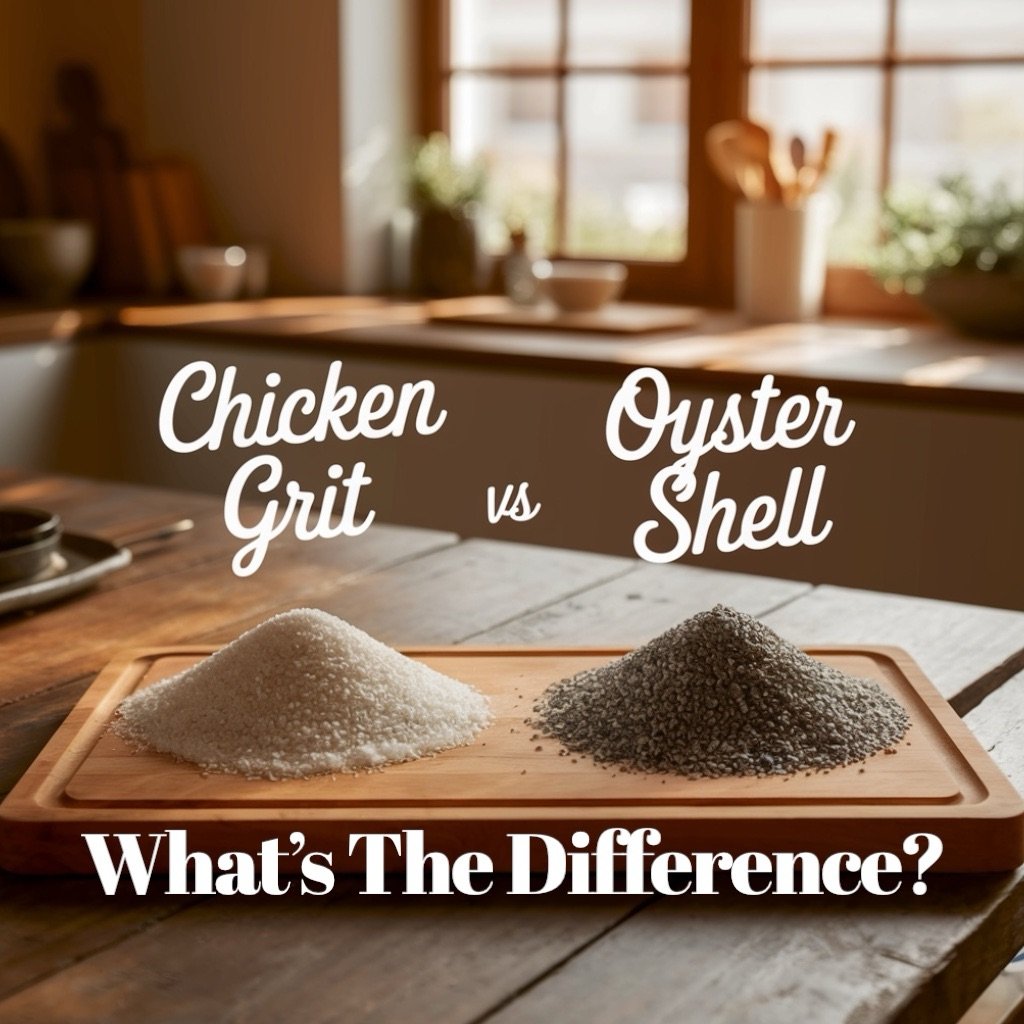
Chicken Grit vs Oyster Shell: What’s the Difference (and Do You Need Both?)
I’ll be honest — when I first got chickens, I figured chicken grit vs oyster shell was just different packaging for the same stuff. Both came in similar-sized bags, both looked like crushed rocks, and both said “important for chickens” on the label. So I picked one, tossed it in their feeder, and figured I was doing just fine.
That didn’t last long.
A few weeks in, my hens started laying soft-shelled eggs you could practically fold in half, and one of my chicks had weird-looking droppings that just wouldn’t clear up. After some digging (and a few hard lessons), I realized I was totally mixing up two things that do very different jobs — and trust me, your birds need both.
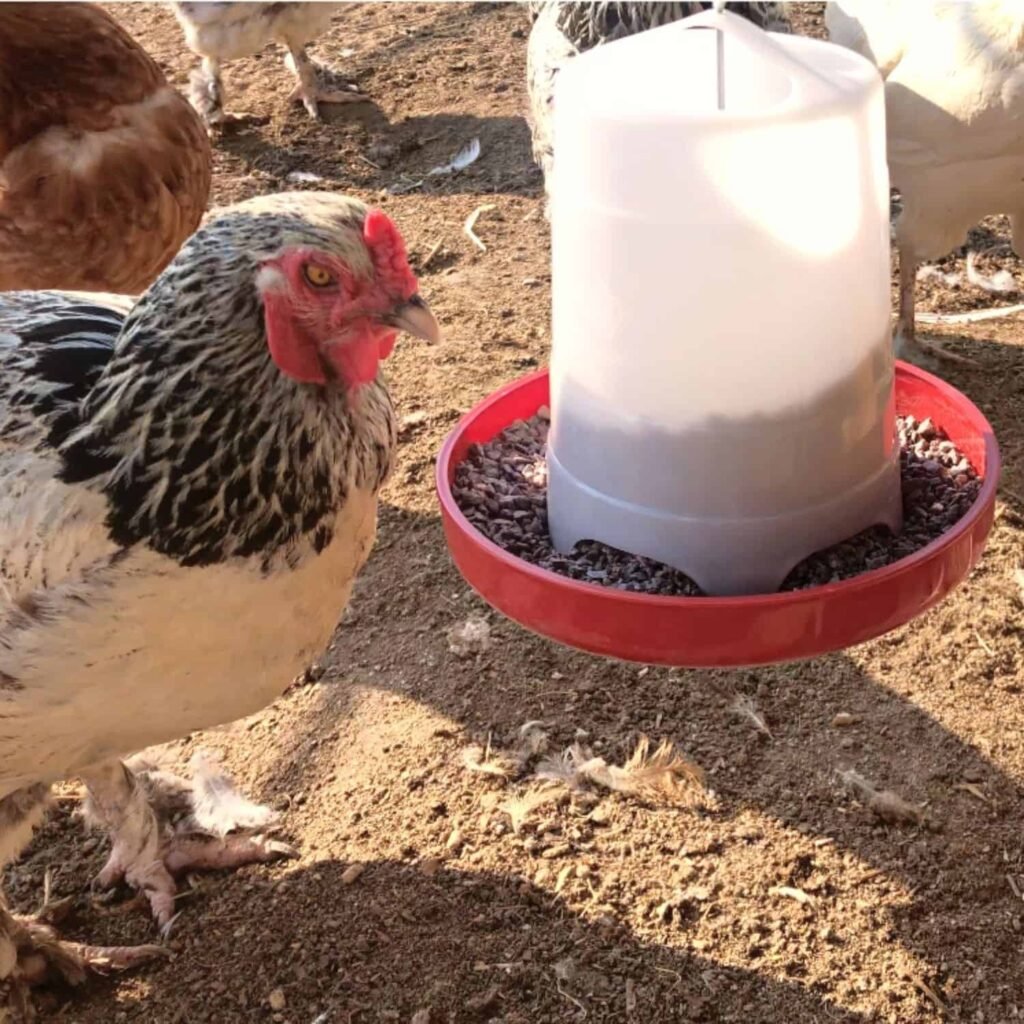
What Is Chicken Grit, Really?
Chicken grit is basically your flock’s version of teeth. Since chickens don’t have actual chompers to break down food, they rely on grit — tiny, hard stones or crushed granite — to help grind everything up in their gizzards. Without it, food just… kinda sits there. It’s uncomfortable, inefficient, and can even lead to impaction.
If your birds are free-ranging, they’ll usually pick up natural grit on their own. But if they’re mostly in a run or coop setup, you need to give them a little help. I use this chick grit right here for my younger birds, and it’s been perfect — no artificial junk, just clean crushed granite with some added probiotics to help those tiny digestive systems out.
Whether they’re pecking at scratch grains or eating leafy greens from your hand, grit makes sure everything keeps moving through their system the way it should. It’s a small thing with a big impact.
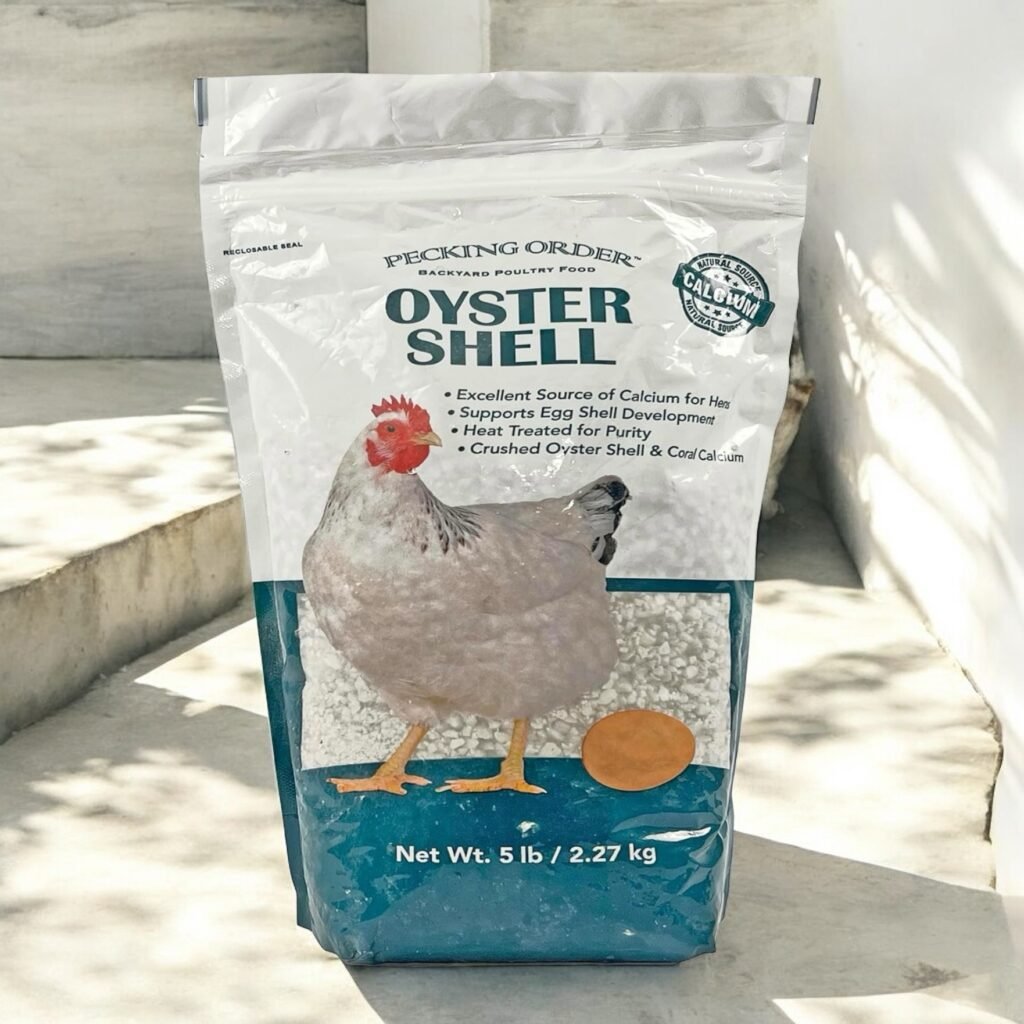
What Oyster Shell Does (And Why It’s Not Grit)
This is where I really got tripped up in the beginning. I thought I could just use oyster shell as grit, like a one-size-fits-all mineral mix. Turns out, that’s a fast track to soft eggs and frustrated hens.
Oyster shell is not grit. It’s a calcium supplement — and its one job is to help laying hens produce strong, solid eggshells. If you’ve got thin, cracked, or rubbery eggs showing up in the nesting box, it probably means your flock isn’t getting enough calcium.
What finally helped me out was trying this oyster shell supplement — just pure, crushed oyster shell with no fillers or weird extras. I didn’t even have to mix it with feed. I offered it free-choice in a little side dish, and boom — within a week, I started seeing tougher, more consistent shells.
So to be clear: grit helps chickens digest food. Oyster shell helps hens lay healthy eggs. Two very different tools — and you need both in your coop.
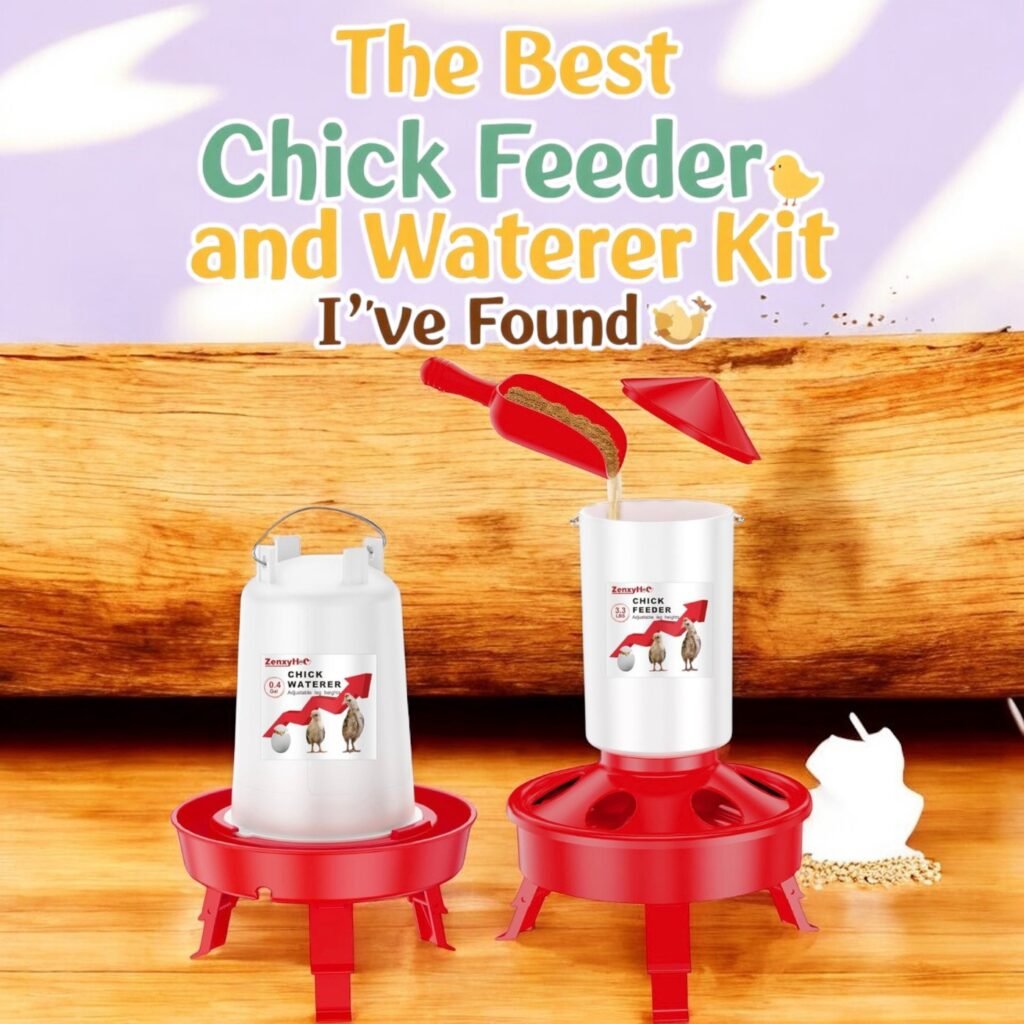
When and Why to Offer Oyster Shell
If your chickens are laying eggs (or just about to start), they need oyster shell. It’s not optional. Every single eggshell they produce is made mostly of calcium — and if they don’t get enough from their diet, their bodies will pull it from their bones. That’s bad news for your hen’s long-term health.
But here’s the trick: you don’t want all your chickens eating oyster shell, especially if you’ve got roosters, young pullets, or older hens that aren’t laying. That’s where something like this handy feeder setup comes in clutch. It keeps the oyster shell separate from the feed so your layers can grab what they need — and everyone else can ignore it.
I just hang it on the wall in my coop, refill it every couple weeks, and let the girls take it from there. No measuring, no fuss.
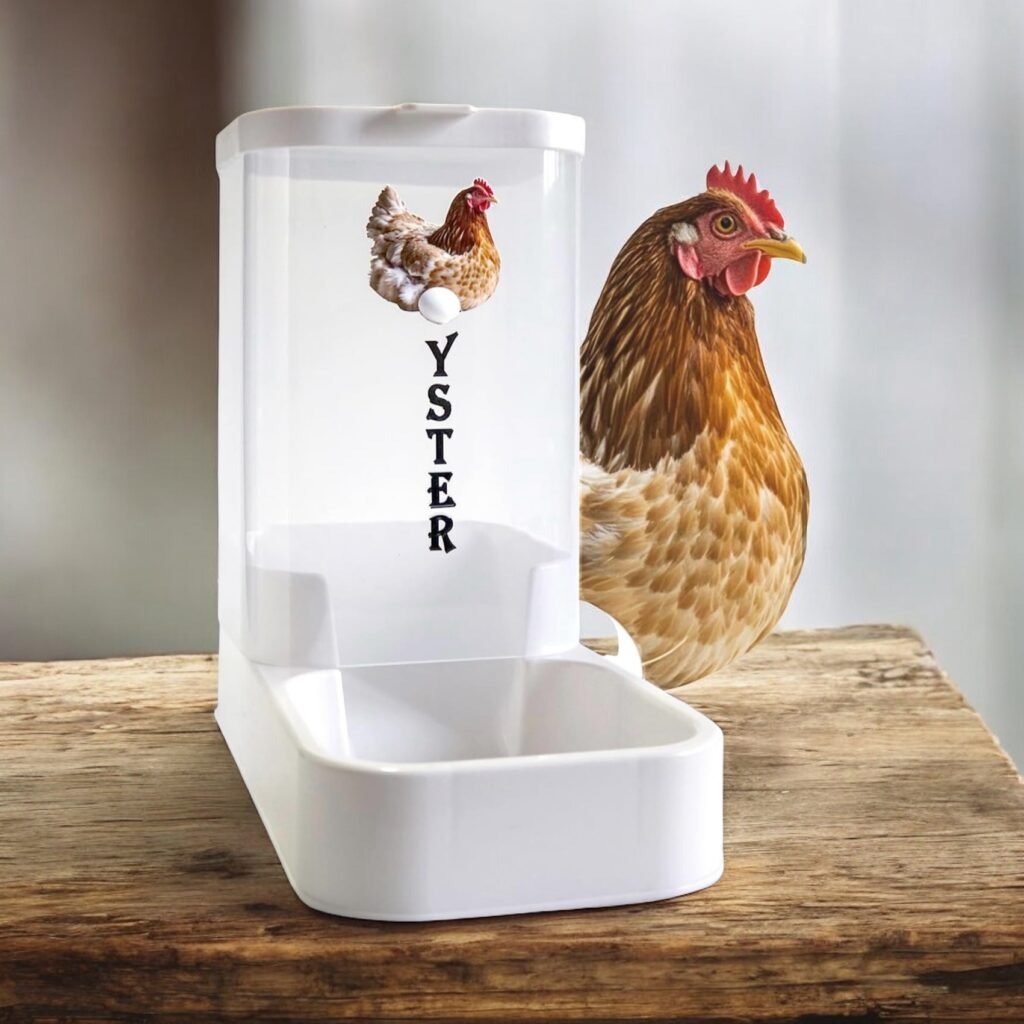
No, You Can’t Just Use One for Both Jobs
I know it seems easier to just pick one — either grit or oyster shell — and call it good. But here’s the deal: using oyster shell as grit doesn’t help with digestion, and grit won’t give your hens the calcium they need to lay strong eggs. They’re not interchangeable.
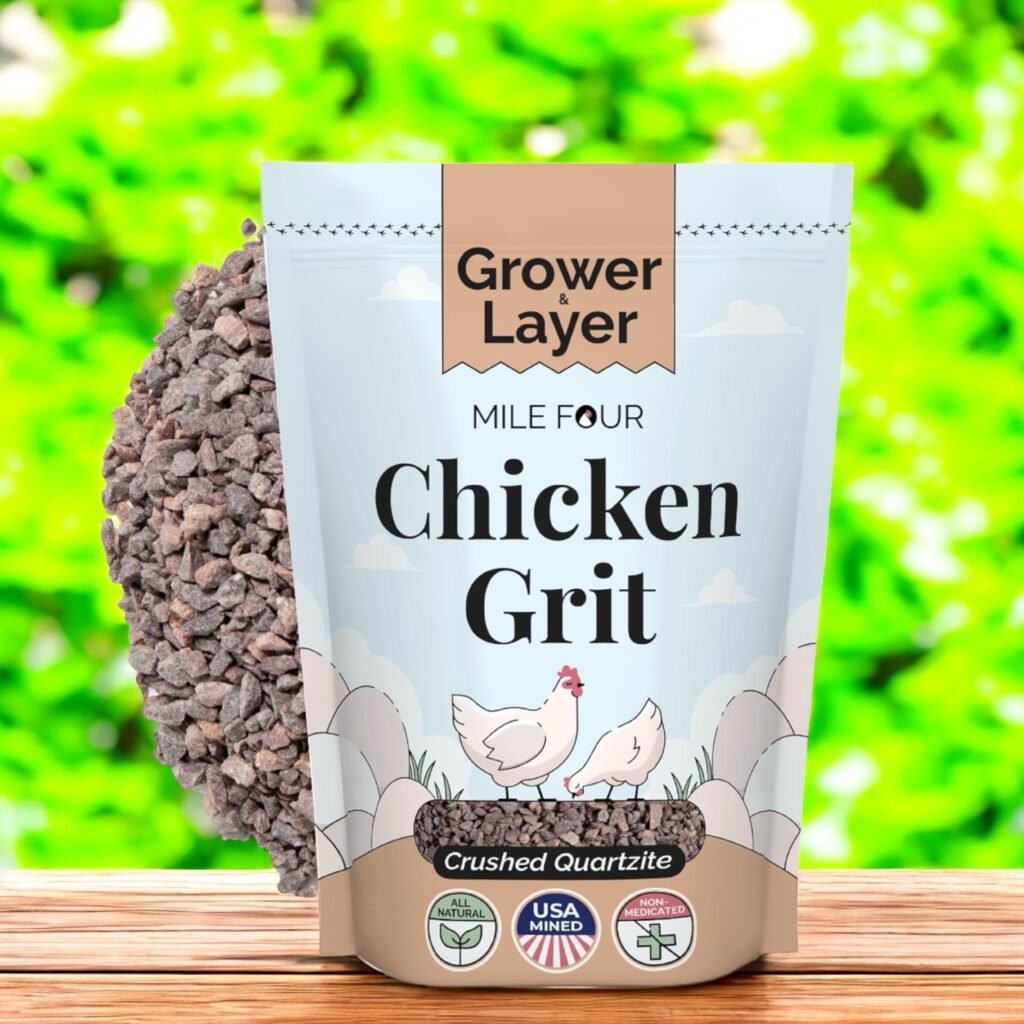
I learned that the hard way. I had a hen that stopped laying completely, and another that seemed bloated and sluggish. Turned out I was only offering oyster shell, assuming it was “close enough.” Once I added grit back into their routine, everything leveled out again. Food digested properly, energy returned, and eggs started showing up right on cue.
Bottom line: Chickens need grit for their gizzard and oyster shell for their eggs. Simple as that.
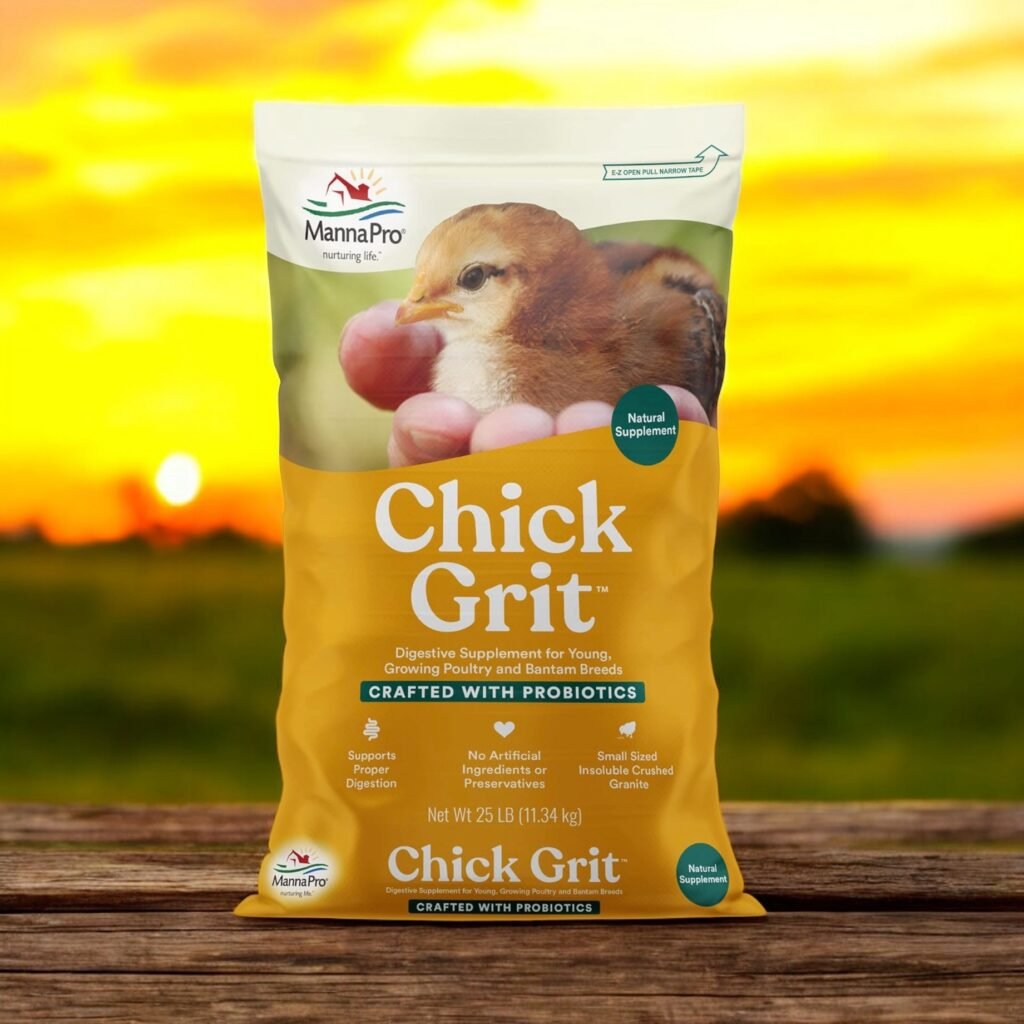
How I Offer Both in My Coop
I used to overthink this setup, but now it’s second nature. I keep grit in one dish and oyster shell in another, both mounted inside the coop so they stay dry and easy to access. I don’t mix either one into their feed — I just let the birds choose what they need.
For young chicks, I use this chick grit setup, and when they grow into layers, I swap in a full-size grit dish. On the calcium side, this two-in-one feeder has been a lifesaver — no mess, no waste, and my hens can peck away whenever they want.
I refill both maybe once every week or two, and that’s it. Low maintenance, but it makes a huge difference.
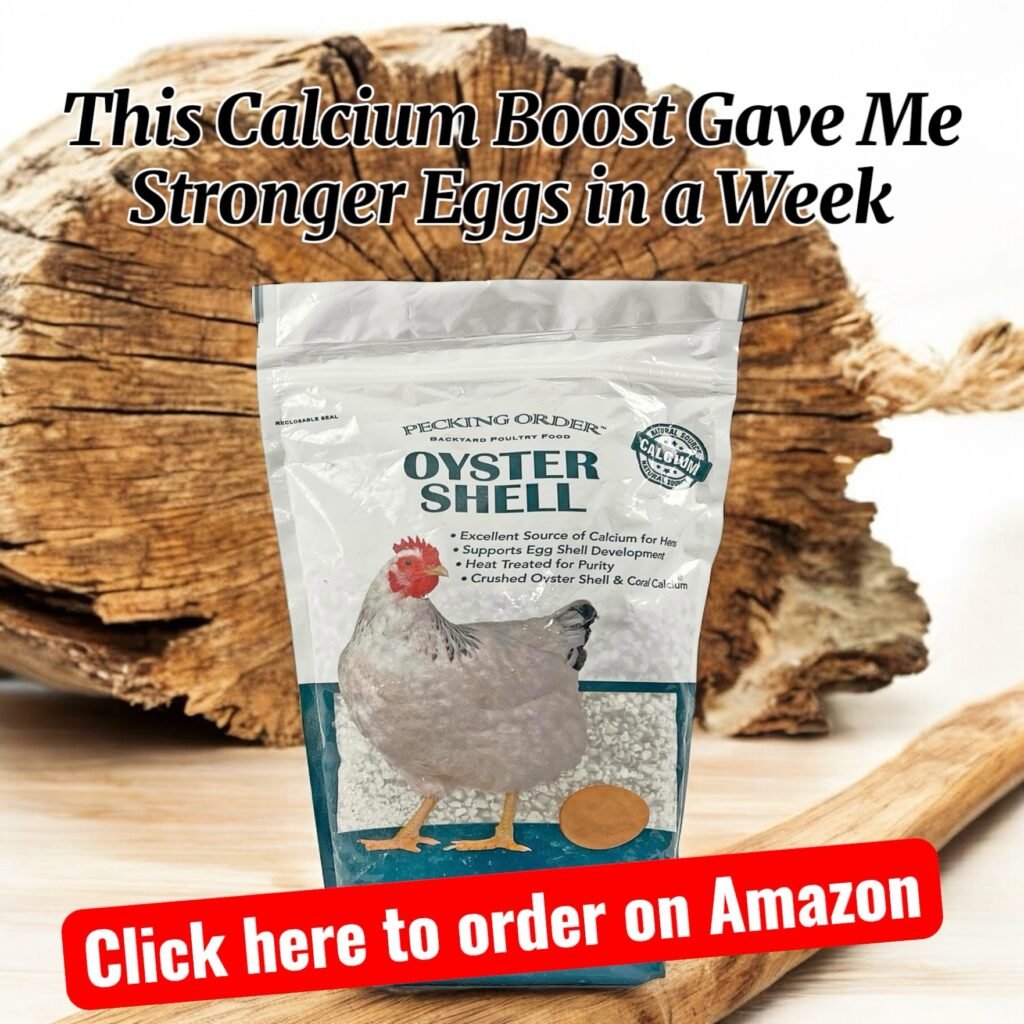
What Happens If You Skip Grit or Oyster Shell?
If you’re not offering grit, you’re asking your chickens to digest grain, seeds, bugs, and kitchen scraps with no tools. And when that food just sits in the gizzard, it can lead to sour crop, impacted crops, or just poor digestion overall. You’ll see droopy posture, weird poop, and a noticeable drop in energy.
Skip oyster shell, and you’ll likely see soft-shelled eggs, shell-less eggs (yep, it’s as weird as it sounds), or even broken eggs inside the nesting box. Over time, a lack of calcium can weaken your hen’s bones, especially if she’s laying consistently.
Here’s a quick checklist of what can happen:
- No grit = poor digestion, impacted crop, lower feed efficiency
- No oyster shell = soft shells, broken eggs, bone loss in hens
- Both missing = cranky birds, health problems, and lower egg production
Trust me — fixing these problems takes way more effort than just putting a couple of bowls in your coop.
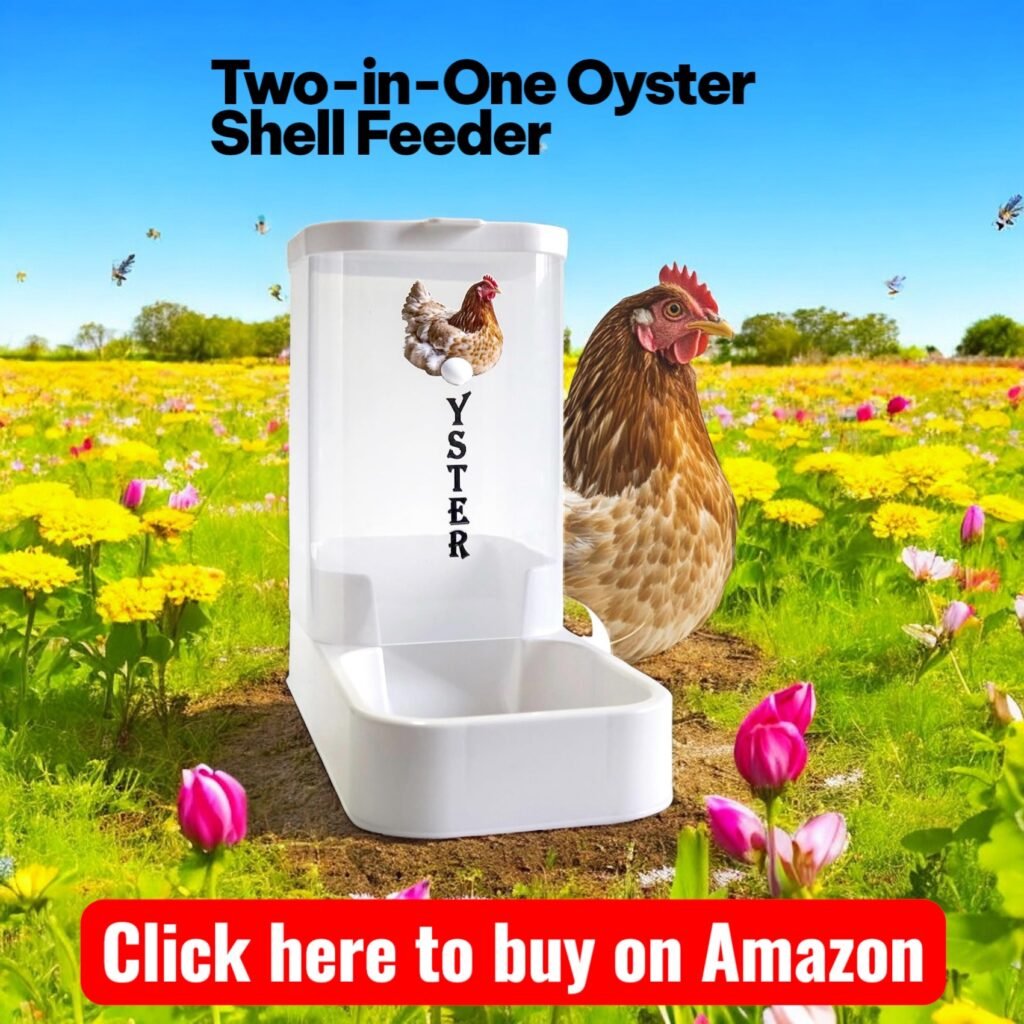
How Much to Offer and How Often
Good news: your chickens are pretty smart when it comes to self-regulating. They won’t overeat grit or oyster shell unless something’s off. That’s why I always recommend offering both free-choice in a separate dish or feeder.
You don’t need to scoop it into every feed bowl or mix it up with their daily ration. Just mount or place a small dish of each — I refill mine maybe every 10–14 days depending on how much they’ve picked through.
Here’s what I personally do:
- Grit: Always available, especially for chicks and birds that aren’t free-ranging much
- Oyster shell: Offered once pullets start laying — around 16–20 weeks — in a separate dish
If you want a simple setup that doesn’t take up much space, I still swear by this dual-purpose oyster shell feeder — it just makes everything easier.
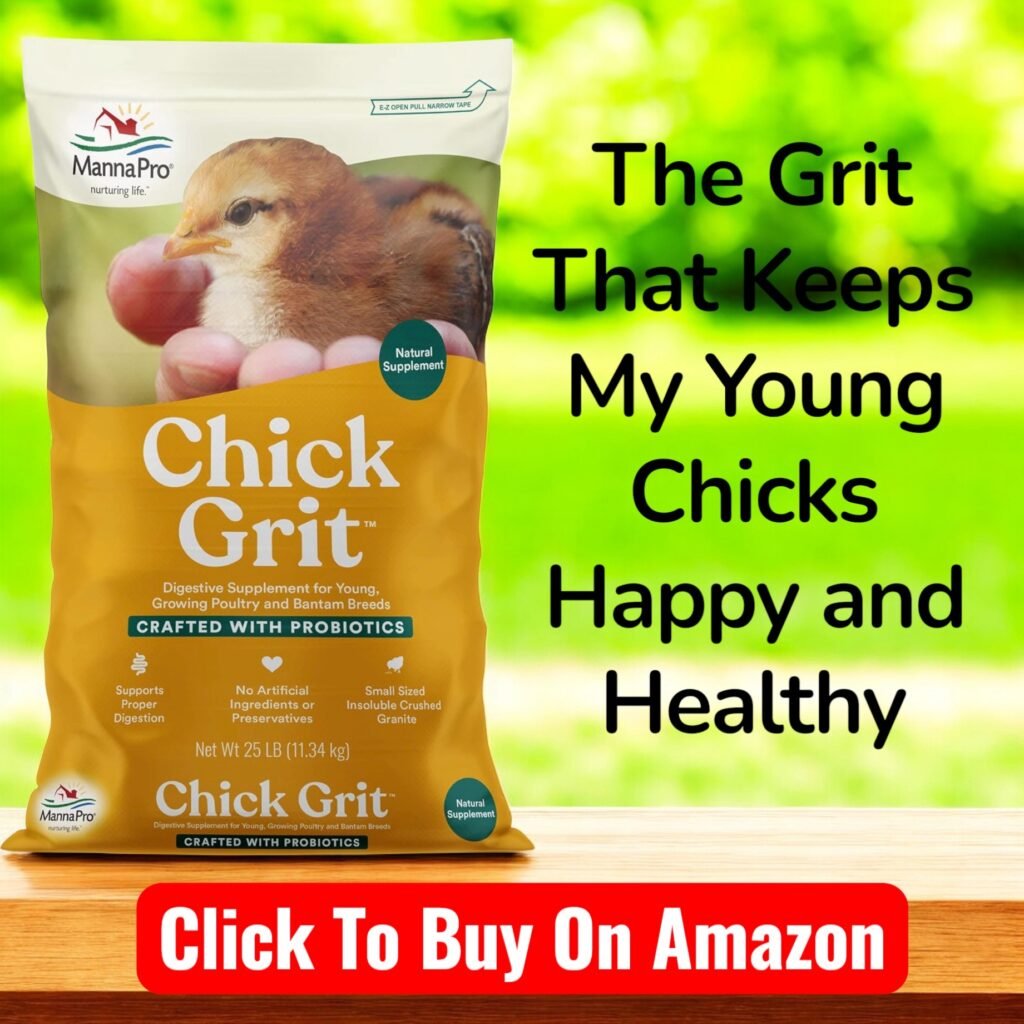
Chicken Grit vs Oyster Shell: Two Small Additions That Make a Big Difference
If you’ve made it this far, you’re already ahead of where I was when I started. I used to think chicken grit vs oyster shell was one of those overhyped “extra” things you only needed if you were doing things fancy. But once I saw the difference in my flock’s health — the better digestion, the stronger eggshells, the fewer issues — I was sold.
So here’s the bottom line:
- Grit helps chickens break down their food
- Oyster shell helps laying hens build strong eggshells
- You can’t use one in place of the other
- And you don’t need to overthink it — just offer both, free-choice
If you’re setting up your coop or just looking to fix a few frustrating issues, I’d recommend checking out this chick grit I use, and if you’ve got layers, this calcium supplement made all the difference in my girls’ eggs.
A couple small changes — but your flock will thank you.
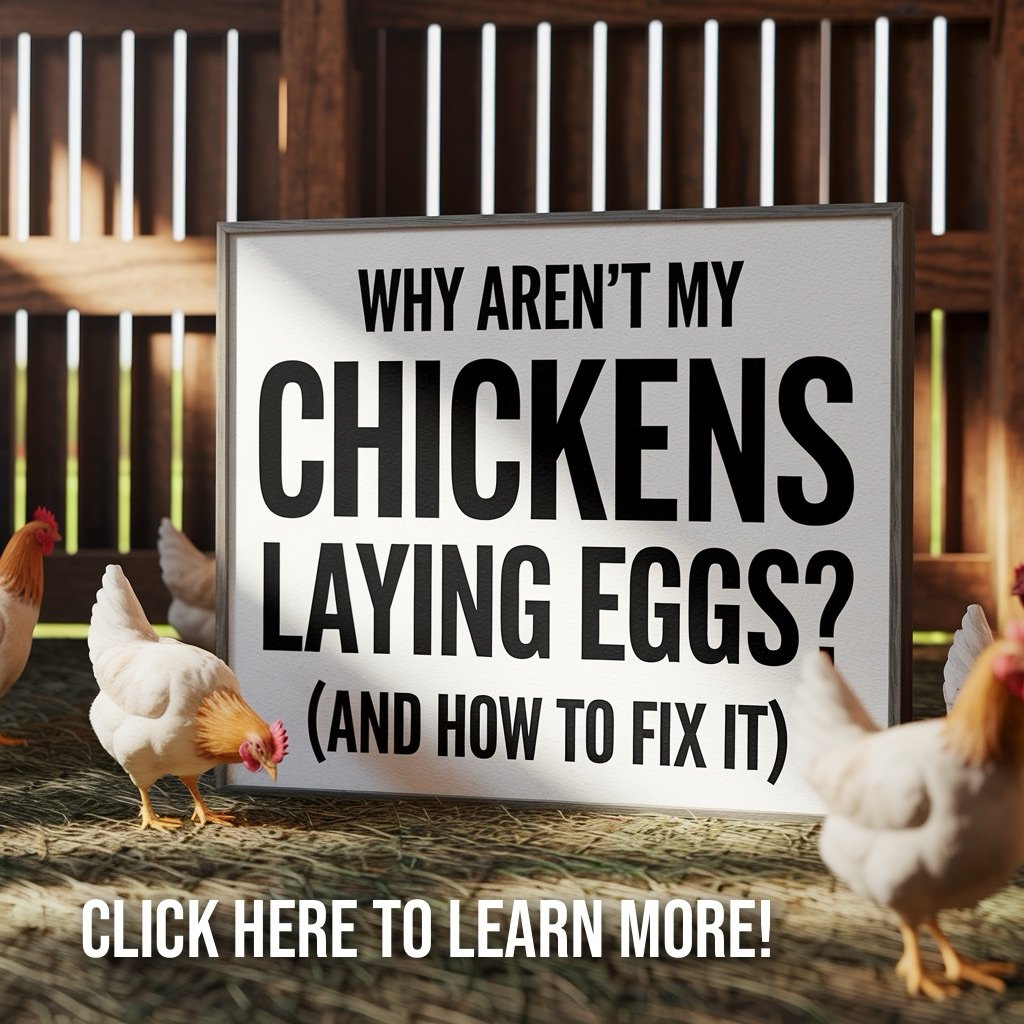
Do Free-Range Chickens Still Need Grit or Oyster Shell?
You’d think if your chickens are out scratching and pecking all day, they’d get everything they need — and in some cases, they do find natural grit like small pebbles, sand, or even bits of gravel. But here’s what I’ve learned: you still can’t assume they’re getting enough.
Free-range birds are more likely to find natural grit, sure — but they’re also burning through calcium faster, especially if they’re active layers. And unless you’ve tested the soil for mineral content (who really does that?), you can’t be sure what they’re getting.
In my case, even my free-ranging flock started showing signs of needing help — thinner eggs, droppings that looked off. That’s when I added separate bowls of grit and oyster shell to their run area. They still roam, but now they’ve got a reliable backup. Easy win.
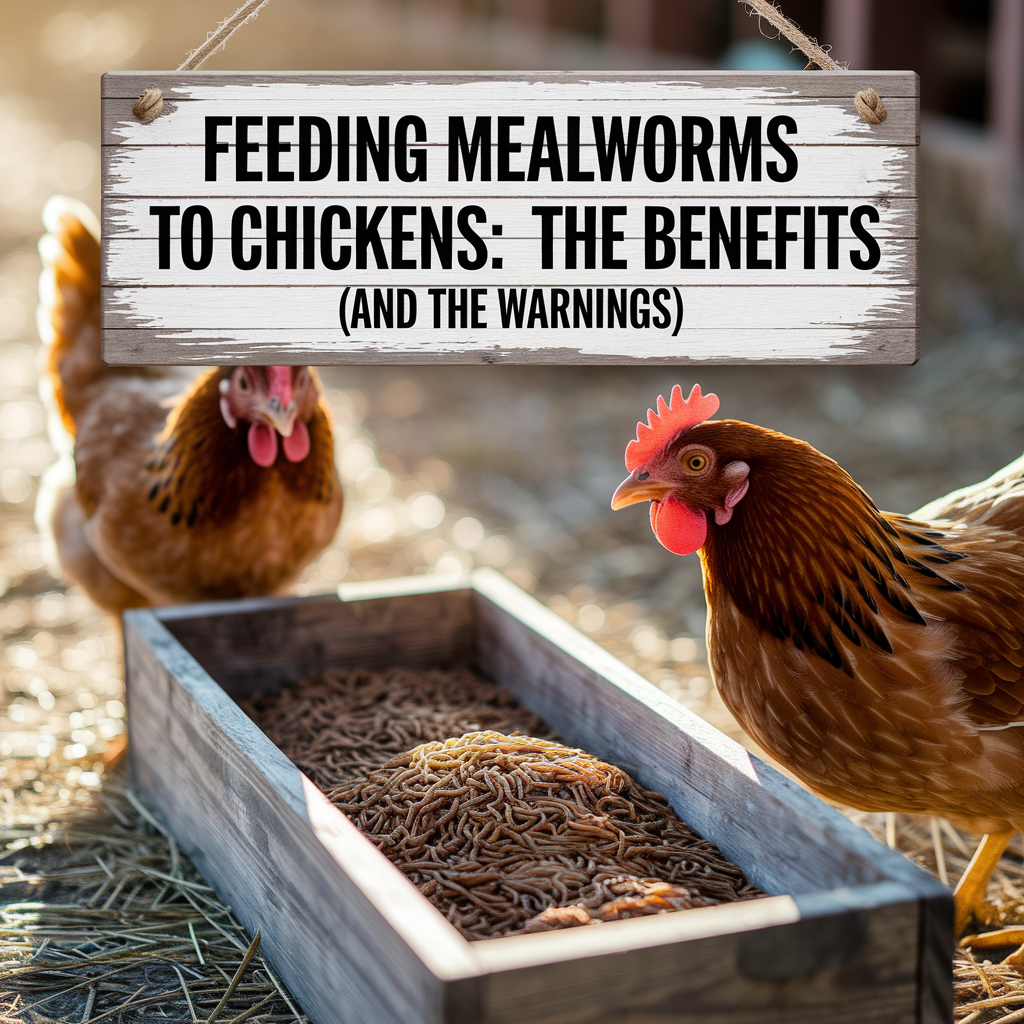
Which Grit or Oyster Shell Product Should You Use?
If you’re standing in the feed aisle or scrolling through pages of listings wondering which one to buy — you’re not alone. Here’s what I go with and why:
For chicks and bantams:
Start them off with Manna Pro Chick Grit. It’s the right size for their tiny crops and even has probiotics for smoother digestion.
For oyster shell (calcium):
I’ve had the best results with this crushed oyster shell. No extras, just clean, effective calcium.
For easy daily setup:
If you want a no-fuss way to offer both without mixing things into their food, I highly recommend this oyster shell feeder setup. Hang it and forget it — my hens love it.

As an Amazon Associate we earn from qualifying purchases through some links in our articles.
